Re-Discovering The Green Lama

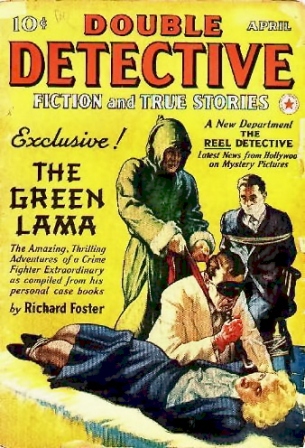 The Green Lama made his debut in the April 1940 issue of Double Detective. Conceived by Kendell Foster Crossen as Munsey’s response to the runaway success of Street & Smith’s The Shadow, the character showed surprising longevity despite never achieving the same degree of popularity as his principal rival.
The Green Lama made his debut in the April 1940 issue of Double Detective. Conceived by Kendell Foster Crossen as Munsey’s response to the runaway success of Street & Smith’s The Shadow, the character showed surprising longevity despite never achieving the same degree of popularity as his principal rival.
Modern readers would likely find the character an interesting cross between Marvel Comics’ venerable sorcerer, Doctor Strange and their noirish vigilante, Moon Knight. Like the latter, The Green Lama shares multiple aliases/personalities that cut across class lines from millionaire playboy Jethro Dumont to gritty soldier of fortune Hugh Gilmore to Buddhist ascetic Dr. Pali. Like Doctor Strange twenty years later, The Green Lama studied under the tutelage of a Tibetan monk who taught him the secrets of Lamaism. He returned to the United States to fight crime while preaching non-violence and evangelizing for others to follow the path of Buddhism.
As with Doc Savage, The Green Lama is surrounded by a colorful cast of supporting characters from the brilliant Dr. Harrison Valco to the well-educated ex-gangster Gary Brown and his debutante girl friend Evangl Stewart to grizzled Lieutenant Caraway to the Lama’s Tibetan mentor Tsarong to the magician Theodor Harrin to the acting duo of Ken Clayton and Jean Farrell to the mystery woman Magga and the Lama’s chronicler Richard Foster (the pseudonym Crossen used on all of his Lama stories).
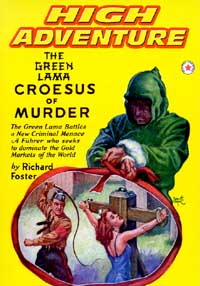
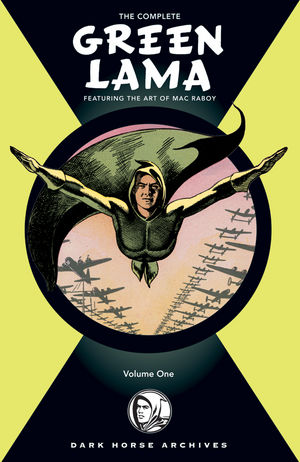 Thirteen additional Green Lama stories were published in the pages of Double Detective over the course of the next two years. While Altus Press has announced plans to reprint the entire series, currently only the first six original stories are readily available as reprints in High Adventure. Less than a year after the character made his pulp debut, he made a successful transition to the comics medium and enjoyed an equally successful run with his own comic book series at the same time as the pulp adventures were being printed. Crossen wrote the scripts for three dozen comic book appearances for his character. Dark Horse has collected the last eight issues in a pair of prestige hardcover collections.
Thirteen additional Green Lama stories were published in the pages of Double Detective over the course of the next two years. While Altus Press has announced plans to reprint the entire series, currently only the first six original stories are readily available as reprints in High Adventure. Less than a year after the character made his pulp debut, he made a successful transition to the comics medium and enjoyed an equally successful run with his own comic book series at the same time as the pulp adventures were being printed. Crossen wrote the scripts for three dozen comic book appearances for his character. Dark Horse has collected the last eight issues in a pair of prestige hardcover collections.
While the comic adventures of The Green Lama outlasted the pulps by a couple of years, Kendell Foster Crossen was not willing to let the character die once the comic series ran out of steam. Radio beckoned and The Green Lama took to the airwaves in 1949 with Paul Frees voicing the character. Crossen continued to script the radio adventures, but sadly the medium did not prove as popular for The Green Lama as it had for The Shadow and the series only lasted for a single brief summer run. A proposed television pilot for CBS failed to materialize once the radio series was cancelled.
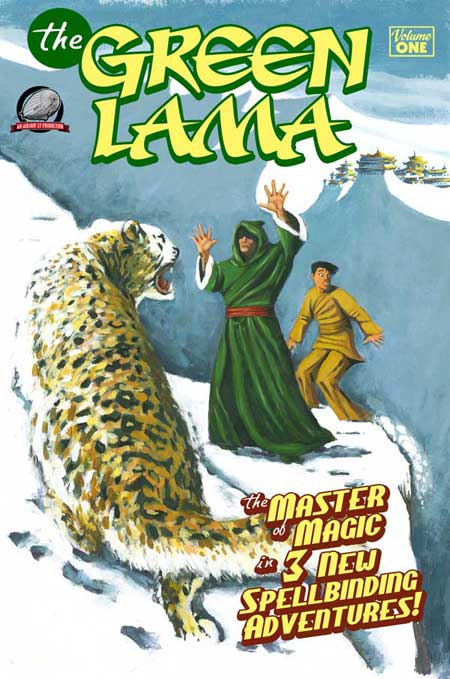
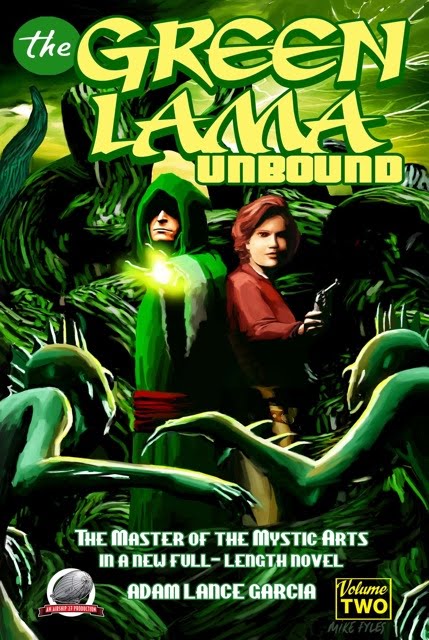 The character fell into obscurity for a few decades until its revival first as an indie comics favorite from the Golden Age by various publishers including Dynamite and Moonstone and then in a new series of pulp adventures (retaining the original period settings) from Airship 27. These new pulp adventures do much to build a more stable continuity around the character incorporating and expanding on what Crossen had originally contributed. They also crossover the world of the Green Lama into that of other pulp characters to the delight of Wold Newtonians and pulp fans everywhere.
The character fell into obscurity for a few decades until its revival first as an indie comics favorite from the Golden Age by various publishers including Dynamite and Moonstone and then in a new series of pulp adventures (retaining the original period settings) from Airship 27. These new pulp adventures do much to build a more stable continuity around the character incorporating and expanding on what Crossen had originally contributed. They also crossover the world of the Green Lama into that of other pulp characters to the delight of Wold Newtonians and pulp fans everywhere.
The quality of writing in the two volumes currently available from Airship 27 is impressive. Adam Garcia, in particular, brings a depth of spirituality and personal faith to the second volume, a full-length novel entitled The Green Lama Unbound that does justice to Crossen’s original concept of combining Buddhism with pulp heroics.
Bringing the Lama into the world of H. P. Lovecraft’s Cthulhu Mythos was an inspired move and one that is central to Airship 27’s revival of the character that manages to not only to honor the original stories, but also enriches them and expands their universe as the writers deepen the characterization and build a more concrete origin and back-story into the series’ framework. Both volumes are well worth seeking out and set a high standard for future installments of this enduring figure.
William Patrick Maynard was authorized to continue Sax Rohmer’s Fu Manchu thrillers beginning with The Terror of Fu Manchu (2009; Black Coat Press). A sequel, The Destiny of Fu Manchu is due for publication in December 2011. Also forthcoming is a collection of short stories featuring an original Edwardian detective, The Occult Case Book of Shankar Hardwicke and an original hardboiled detective novel, Lawhead. To see additional articles by William, visit his blog at SetiSays.blogspot.com